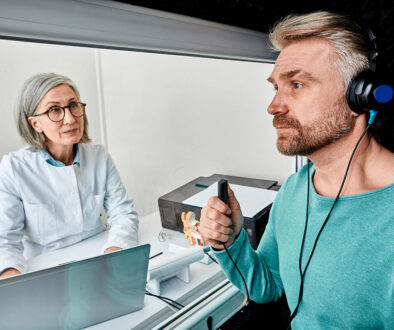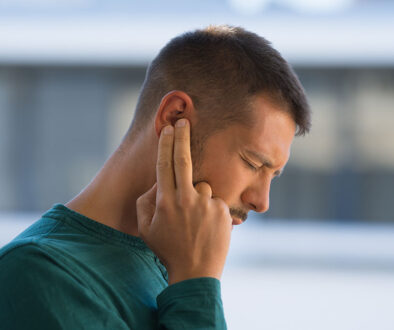What Causes Your Eardrum to Rupture?
A ruptured eardrum is a painful condition that can seriously damage your hearing, make your ear more susceptible to infection, or cause long-term vertigo and dizziness.
How does your eardrum work?
A healthy eardrum is a vital part of healthy hearing. The eardrum is a membrane that vibrates when struck by sound waves. These vibrations then move tiny bones which relay the sound signal to the inner ear. There, the inner ear transfers this message to the brain. These inner ear bones are called the malleus (also called the hammer), incus (or anvil) and stapes (or stirrup). When the eardrum is damaged, these bones can’t function properly, and the signal is disrupted.
What causes a ruptured eardrum?
There are several things that can cause your eardrum to rupture. The medical term for a ruptured eardrum is a tympanic membrane perforation. The most common causes include:
EXTREMELY LOUD NOISES
Experts recommend using hearing protection when you are near any noise at or above 80 decibels (dB). For comparison, the quietest noise that can be heard by someone with healthy hearing is 0 dB. A gunshot registers around 140 to 160 dB.
A MIDDLE EAR INFECTION (ALSO CALLED OTITIS MEDIA)
During an ear infection, fluid becomes trapped in your middle ear. As a result, the pressure from this built-up fluid can rupture the eardrum.
BAROTRAUMA
The Eustachian tube connects your middle ear to the back of the nose, and it plays an important role in equalizing air pressure, ensuring that the pressure outside your ear is the same as the pressure inside. When your ear “pops,” the Eustachian tube is equalizing that pressure.
Barotrauma occurs when the ear is not able to equalize this pressure, which can rupture the eardrum. It’s most often caused by the air pressure changes associated with flying. However, barotrauma can also be caused by scuba diving or a severe blow to the ear.
HEAD INJURIES
Severe head injuries can dislodge the small bones and structures within your inner ear, which can rupture your eardrum.
A FOREIGN OBJECT IN YOUR EAR
Small objects such as hairpins or Q-tips can puncture your eardrum.
What are the symptoms of a ruptured eardrum?
The signs of a ruptured eardrum include:
- Pus-filled drainage from the ear
- Pain
- Buzzing or ringing in the ear (also called tinnitus)
- Complete or partial hearing loss
- Vertigo
- Weakness or dizziness
If you have any of these symptoms, you should contact your local ENT at Raleigh Capitol Ear, Nose and Throat.
How is a ruptured eardrum treated?
If the tear is minor, it will likely heal on its own within a few weeks. If it does not heal, your ear, nose and throat doctor may need to do one of the following:
AN EARDRUM PATCH
During this procedure, your ENT seals the rupture after applying a chemical to the eardrum to stimulate growth. Depending upon the extent of the injury, this process may need to be repeated.
A TYPE OF SURGERY CALLED A TYMPANOPLASTY
This surgery involves grafting a piece of your own tissue to the eardrum to close the hole. This is typically done on an outpatient basis.
If you suspect you have a ruptured eardrum, you should always see your ENT as soon as possible.
Just because the eardrum is able to heal on its own doesn’t mean you should try to treat it at home.
The process of hearing is a “ballet” of several tiny bones and membranes working together. The slightest disruption in this process can cause lifelong problems. In addition, tears in your eardrum provide a gateway for bacteria, which can lead to a serious infection. A physician with Raleigh Ear, Nose and Throat can accurately assess the extent and damage of the rupture, tailoring a plan of treatment that will help preserve your hearing.
If you’d like more information on conditions involving the ear, you may find these articles helpful:
How One Procedure Can Save Your Son or Daughter from Childhood Ear Infections
Is it Safe to Fly with an Ear Infection?
Eustachian Tube Problems




